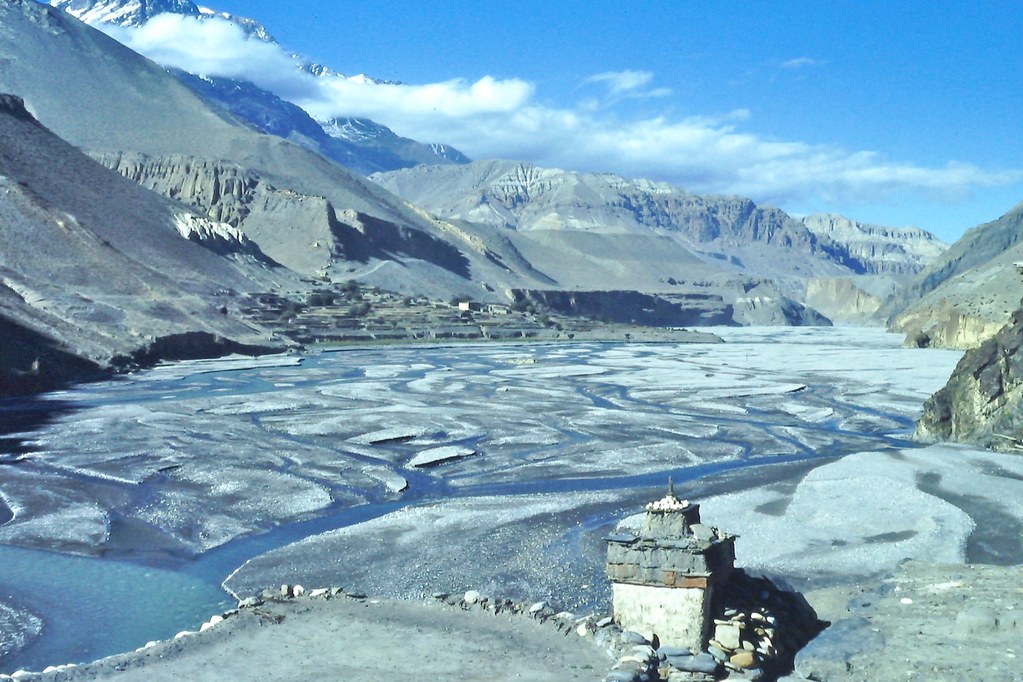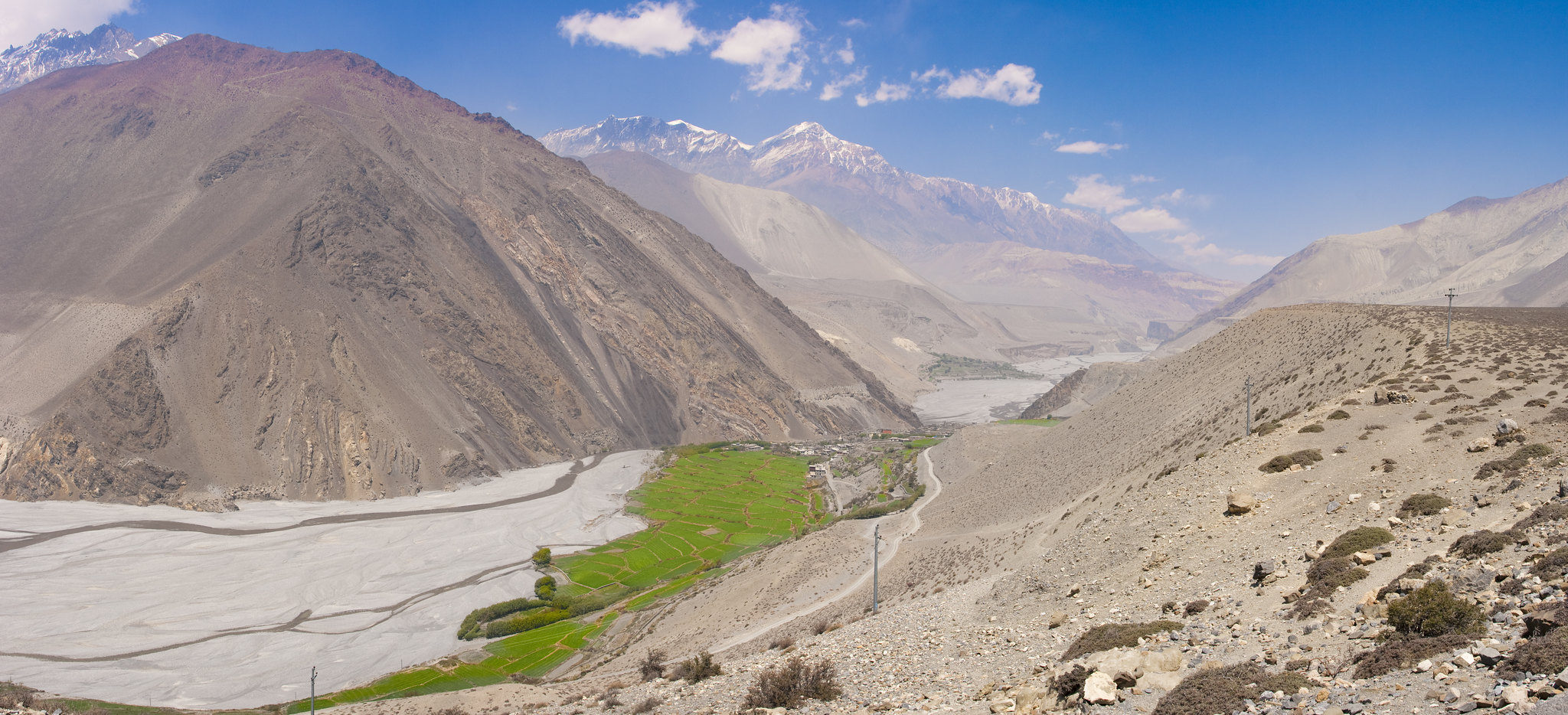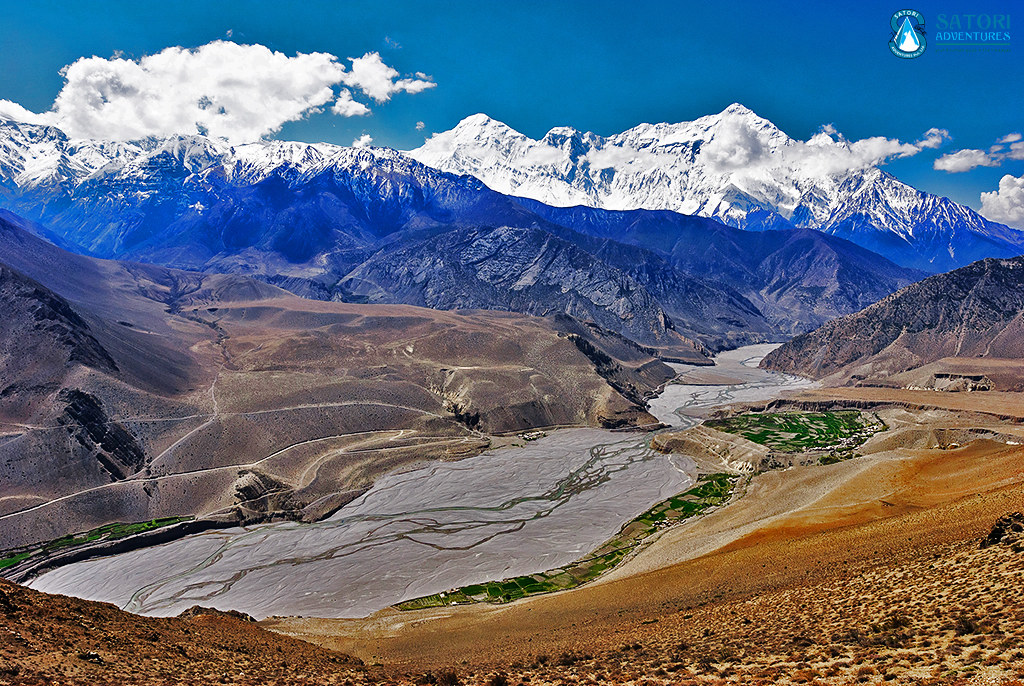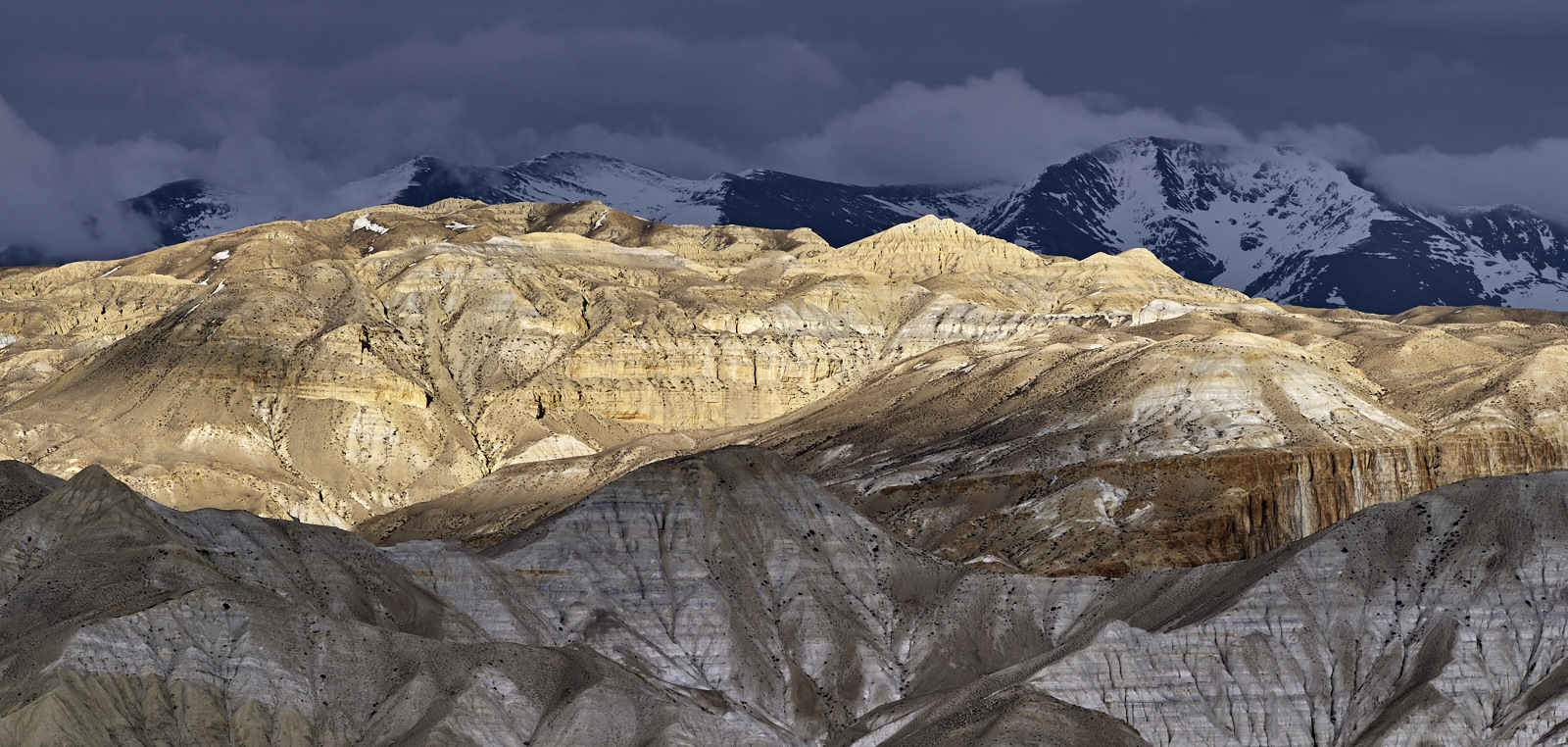Difficulty level of the Upper Mustang Trek
Upper Mustang Trekis considered a moderately challenging trek. Nevertheless, the trek is attainable if you are physically and mentally fit and seek an amazing adventure for a lifetime!
This trek is challenging due to the high altitude and arid surroundings. The trail involves both ascends and descends, as many classical treks in the Nepal Himalayas. Steering high passes and steep descents is the main point of the voyage. But then there are the stunning mountains and the fact you are in the breathtaking Kingdom of Lo to indemnify you.
As far as weather is concerned, being that this trek is in the rain shadow and receives less rainfall during monsoon seasons, you can do this trek almost all year. This trek is suitable for individuals of all age groups, including families with children and seniors, the Upper Mustang trek obtrudes no restrictions or limitations for most participants. No matter what, a reasonable level of fitness is required to tackle this journey.
Like all treks in Nepal, we counsel to ensure a commendable fitness level and dedicate some extra time to gym workouts or hiking preparation before your arrival. Work on both cardio and leg muscle strengthening. As well, be sure to involve coverage for high-altitude trekking when arranging your travel insurance.

Main Highlights of this trek
- Witnessing the most awe-inspiring sights of Mt. Annapurna (8,091), Thorung Peak, Nilgiri (7,061m), Chulu West, Chulu East, Tukuche Peak, Dhaulagiri (8,167m), Lamjung Himal, Annapurna II, and Annapurna IV
- Exploring the mystical land; the ancient kingdom of Lo Mangthang (Capital of Upper Mustang)
- Experience a live sight of the ancestral and ethnic Tibetan Buddhist culture, traditions and lifestyle.
- Situated amidst the rain shadow region, it's a wonderful trek to seek a getaway from the summer monsoon.
- Immersing in a spiritual ambience while walking through many Gompas, chortens, flapping prayer flags, caves, rock murals, ritual chanting and centuries-old monasteries.
- Admire the world's deepest gorge- Kali Gandaki Gorge.
- Traversing in the restricted areas and Trans-Himalayan regions of Nepal.
- Visit the Muktinath temple - a holy site for both Hindus and Buddhists.
- Relish on the beautiful landmarks of the lake city of Pokhara.
The Best Upper Mustang Trek Itinerary
Day 1: Arrival in Kathmandu (1350 m / 4429 ft)
Day 2: Kathmandu Sightseeing and Trek Preparation in Kathmandu ( 1350 m / 4429 ft)
Day 3: Drive from Kathmandu to Pokhara (830 m / 2723 ft)
Day 4: Flight from Pokhara to Jomsom (2743m/8999ft) and Trek to Kagbeni (2804 m / 9200 ft)
Day 5: Trek to Chele (3050 m / 10007 ft)
Day 6: Trek to Syanboche (3475 m / 11400 ft)
Day 7: Trek to Ghami (3520 m / 11550 ft)
Day 8: Trek to Tsarang (3560 m / 11680 ft)
Day 9: Trek to Lo Manthang (3840 m / 12600 ft)
Day 10: Round-Trip to Chhoser (3840 m / 12600 ft)
Day 11: Trek to Dhakmar (3810 m / 12500 ft)
Day 12: Trek to Ghiling (3800 m / 12467 ft)
Day 13: Trek to Chhusang (3050 m / 10007 ft)
Day 14: Trek to Jomsom (2743 m / 9000 ft)
Day 15: Flight back to Pokhara (830 m / 2723 ft)
Day 16: Drive back to Kathmandu (1350 m / 4429 ft)
Day 17: Final Departure Day
The Upper Mustang is a restricted area. Why?
Upper Mustang, with its renowned barricaded city and the religious country of Lopas, is one of
Nepal’s most well–preserved mysteries. Located near the border of Tibet, Upper Mustang
is a secluded region in the Himalayas of Nepal.
The Mustang regions show the world’s most remarkable attentiveness to cliff caves, many others
which are still to be explored. Holding a great worth of cultures, ancient house, primaeval arts, the
cultural bequest of ancient Tibetan Buddhism and the unblemished trans-Himalayan the Upper
Mustang is an amazing area.
So, to safeguard and conserve all the hidden gems of this area, Nepal has made the Upper
Mustang is a restricted area.
Without any special permits, no one can enter the area because the government executed
strict rules and a special permit that lowers entrance to the region and retains it private.

Trekking Permits for Upper Mustang Trek
Lying near the border of China/Tibet, Upper Mustang is considered one of the Restricted
areas of the region. So, without any permission, you are not allowed to enter this forbidden
kingdom of Mustang. The permits you will be required to achieve this trek is;
1. Annapurna Conservation Area Permit (ACAP)
2. Restricted Area Permit (RAP)
For the Annapurna Conservation Area (ACAP) each trekker needs to pay $20 which is valid for
however long the trek takes.
The Restricted Area Permit (RAP) is valid from the departure point at Kagbeni to the re-entry
point at Kagbeni on this trek. For the Upper Mustang Trek, a 10-day RAP is sufficient. The cost
of the Restricted Permit is $500 per person for 10 days. If the trek extends beyond 10 days
within the Upper Mustang area, an additional fee of $50 per day will be applied.
If you have already a restricted trekking permit, a Trekking Information Management System
(TIMS) card is not required. Nevertheless, obtaining a TIMS card is preferable if you plan to extend your trek to the Annapurna
region trails. Restricted area trekking permits are available
at the Nepal immigration office in Kathmandu, while Annapurna Conservation Area Permit
(ACAP) can be available at the Nepal Tourism Board's office.
Compulsion of trekking guide in Upper Mustang Trek
It is mandatory to hire a licensed guide to trek the Upper Mustang region. As the region falls
under restricted areas, trekkers must go through an authorized trekking agency to get special
trekking permits. Hiring a guide is highly advantageous for steering remote terrain and capturing
cultural insights. For this trek, the guide is compulsory to hire.

Best trekking season for Upper Mustang Trek
The best seasons for undertaking the Upper Mustang treks are regarded as Spring (March to May), Autumn (September to November), and the Monsoon (June to August). The Upper Mustang's geography and weather distinguish it from other trekking areas in Nepal. Situated in the rain shadow, the region experiences minimal rainfall even during the monsoon season, manifesting it as a suitable season for trekking.
In spring season
Spring is considered a great time to visit the Upper Mustang, with a crystal-clear sky stable weather conditions and pleasant temperatures. During this season, trekkers will experience an amazing clear sight of the highest Himalayan peaks and surreal landscapes.
In this season, Tiji, the primary festival of Lo Manthang will be held and presents trekkers with cultural richness which adds more beauty to the experience.
In Autumn season
Autumn season is an optimal time for trekking in the Upper Mustang because it is distinguished by stable and dry weather. The day will be excellently clear and visible is worth it. Trekkers can enjoy everything this Upper Mustang trek has to offer!
October and November are the best trekking months for the Upper Mustang trek. During these months, it is possible to cross high mountain passes as well.
In Monsoon Season
Monsoon season in the Upper Mustang region exploits crucially less rainfall due to its rain shadow location. The trail filled with blooming flowers and lush greenery creates a charming scenery for trekkers.
In this season, the Yartung (horse racing festival) in August will be held where trekkers get to experience the unique culture of the locality.
In Winter season
Mostly, the winter season is not advisable for the Upper Mustang trek. Although it is technically feasible, trekking during this period can be challenging due to significant snowfall at elevated altitudes.
As per the temperature, some locals wander from the area to get away from the cold weather. In this case, the several tea houses will be closed and facilities along the route will not be applicable efficiently. So, your experience of yours will not be amazing.

Acute Mountain Sickness (AMS) While Trekking in Upper Mustang
While trekking to Upper Mustang, you will be only at the maximum altitude of (3810m) which is below 4,000 m, which means that there are no high chances of gaining altitude sickness. Even if occurs symptoms of Altitude Sickness (AS) like; headache, nausea, or vomiting, there is a low risk of serious altitude consequences. But you must be careful about following acclimatization measures. Diamox is an Anti-altitude sickness medicine and also descending at a lower altitude are the two ideal keys to overcome altitude sickness.
Following measures to overcome Altitude sickness;
- Ascend gradually, ensuring adequate rest and proper acclimatization.
- Maintain a balanced diet with sufficient and nutritious food.
- Stay well-hydrated by drinking plenty of water.
- Abstain from consuming alcohol, cigarettes, or tobacco throughout the whole trek.
- Harvest mental flexibility and be psychically prepared.
- Train your body for uphill hikes through consistent workouts in the three months leading up to the trek.
If you follow these tips, there will not be any problems during the trek. Stay calm and use these measures instead of worrying.
Note - Before embarking on any of the higher-altitude treks, make sure to consult with your doctors about your health conditions.

Trekking Distance of Upper Mustang
The Upper Mustang Trek covers a distance of 125 kilometres, with trekkers walking an average of 5-6 hours per day. The voyage commences in Jomsom, continues to Lo-Manthang, and concludes the circuit by returning to Jomsom through the Muktinath temple.
Prerequisites for obtaining the Upper Mustang Trek Permit
To apply for your permit, you'll need to submit these documents to the company here are listed below:
- Original Passport with valid Nepal Visa
- Three Passport sized photo
- Travel Insurance
- Fee for Permits
Essential Packing List for Upper Mustang Trek
Before embarking on this journey make sure to manage all the equipment that will ease your journey. The essential list for this Upper Mustang Trek is listed below;
Clothing
- Hiking t-shirts
- Fleece pullover or hoodie
- Fleece pants
- Down jacket
- Waterproof and windproof outer shell jacket and pants
- Moisture-wicking base layers (lightweight thermal tops/bottoms
- Trekking pants (convertible for versatility)
- Hiking short pants
- Thermal underwear for colder months
- Women sports bra
Headgear
- Woolen hat
- Beanie
- Balaclava
- Sun hat/cap with neck protection
- Sunglasses with UV protection
Hand gear
- Insulated gloves, /mittens (for colder months)
- Thin inner gloves (for layering)
Footwear
- Comfortable trekking boots/shoes
- Quick-drying hiking socks
- Sandals for tea houses
- Running shoes
- Snow gaiters
Trekking Gear
- Backpack with rain cover
- Duffle bag
- Sleeping bag
- Sleeping bag liner (optional)
- Trekking poles
- Headlamp or flashlight with extra batteries
- Water bottle or hydration system
First Aid
- Water purifying tablets
- Anti-nauseant medication
- Rehydration salts
- Mosquito and insect repellent
Toiletries
- Soap
- Shampoo
- Quick-dry towel
- Toothpaste
- Sanitizer
- Toilet paper
- Toothbrush
Personal care
Extras
- Reusable water bottles
- Upper Mustang Trek Map
- Phone
- Power Banks
- Solar Charges
- Extra Batteries
- Local SIM card
- Camera
Crucial documents
- Passport
- Upper Mustang Trek Permits
- Travel Insurance
Accommodation and Foods during Upper Mustang Trek
Accommodation
In Upper Mustang, the accommodations facilities you’ll get to experience are amazing. With a limited number of rooms, the upper Mustang teahouses offer a comfortable and relaxing spot to stay. The rooms typically feature two single beds with minimal furnishings. While pillows and blankets are provided, but that not as flexible and warm, so we advise you to use a sleeping bag for your comfort and hygiene.
In the case of bathrooms, only a few tea houses offer attached bathrooms while others have shared toilets/bathrooms and furnished with squat seats. We recommend you carry your own toilet paper and pocket soap, because not every tea house provides this facility. The Showers you get to use are also shared, and for a hot shower, there is usually a cost an extra charge in the Mustang region.
Foods
The foods in this Upper Mustang trek are similar to other trekking packages. The trail is unique for presenting a variety of Tibetan dishes influenced by the Tibetan Buddhist community residing in the area.
The classic and major food in the trek you’ll be served is ‘Dal Bhat,' a traditional dish featuring lentil soup, rice, and vegetable curry, reflecting the typical Nepali diet. This ebullient and unlimited meal is a favourite among trekkers, satisfying hunger effectively. For breakfast, you will serve different varieties such as porridge, pancakes, eggs, jam, and honey.
Moreover, you will also get to taste the delightful Tibetan bread, known for its delicacy. And lastly, delicious Thukpa, a Tibetan noodle soup that is renowned in the region. Mostly. the Nepali people loved it during the winter season to feel warm

Physical Fitness Required for Upper Mustang Trek
Experience in any other trekking is not required for this trek, but the condition of trekkers' health should be Physical as well as mental fit. Focus on your cardio and leg muscle strength for a couple of months before undertaking this journey.
Hiking for about 6 -7 hours per day is a compulsion, so it will help to improve endurance and power at higher elevations and tackle breathing problems as well. To make a trip even easier and get the exhilarating experience you have to walk and jog beforehand. Prepare yourself as much as you can. This is the main thing to motivate yourself to achieve higher destinations in Nepal.
Note: If you have any precedent health conditions such as heart, lungs or any other serious problems then consult your doctor properly so that there won’t be any problems during the trek.
Conclusion
The Upper Mustang Trek is an outstanding voyage that permits trekkers to explore a veiled Himalayan gem, exploiting both natural wonders and a rich cultural heritage. The trek bestows a glance into an ancient era and proffers an eccentric adventure in the heart of the Himalayas.


.jpg)






